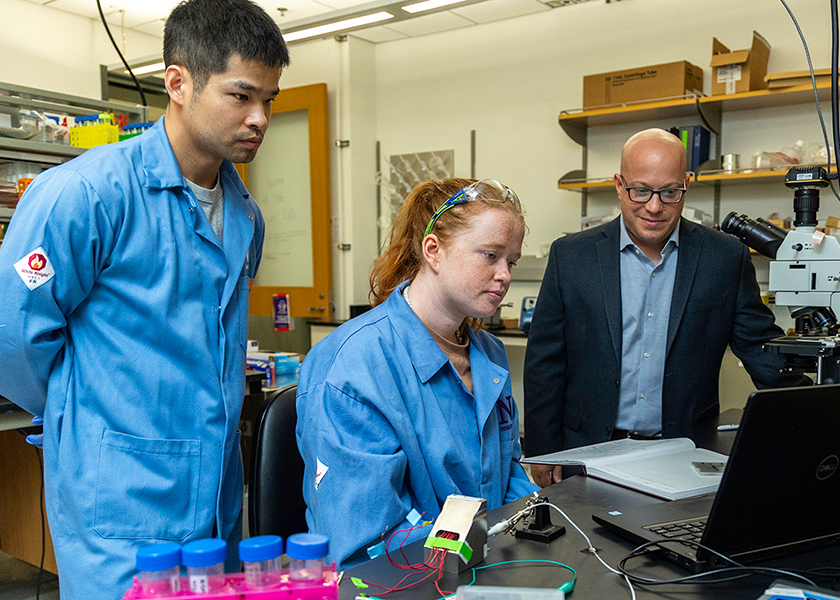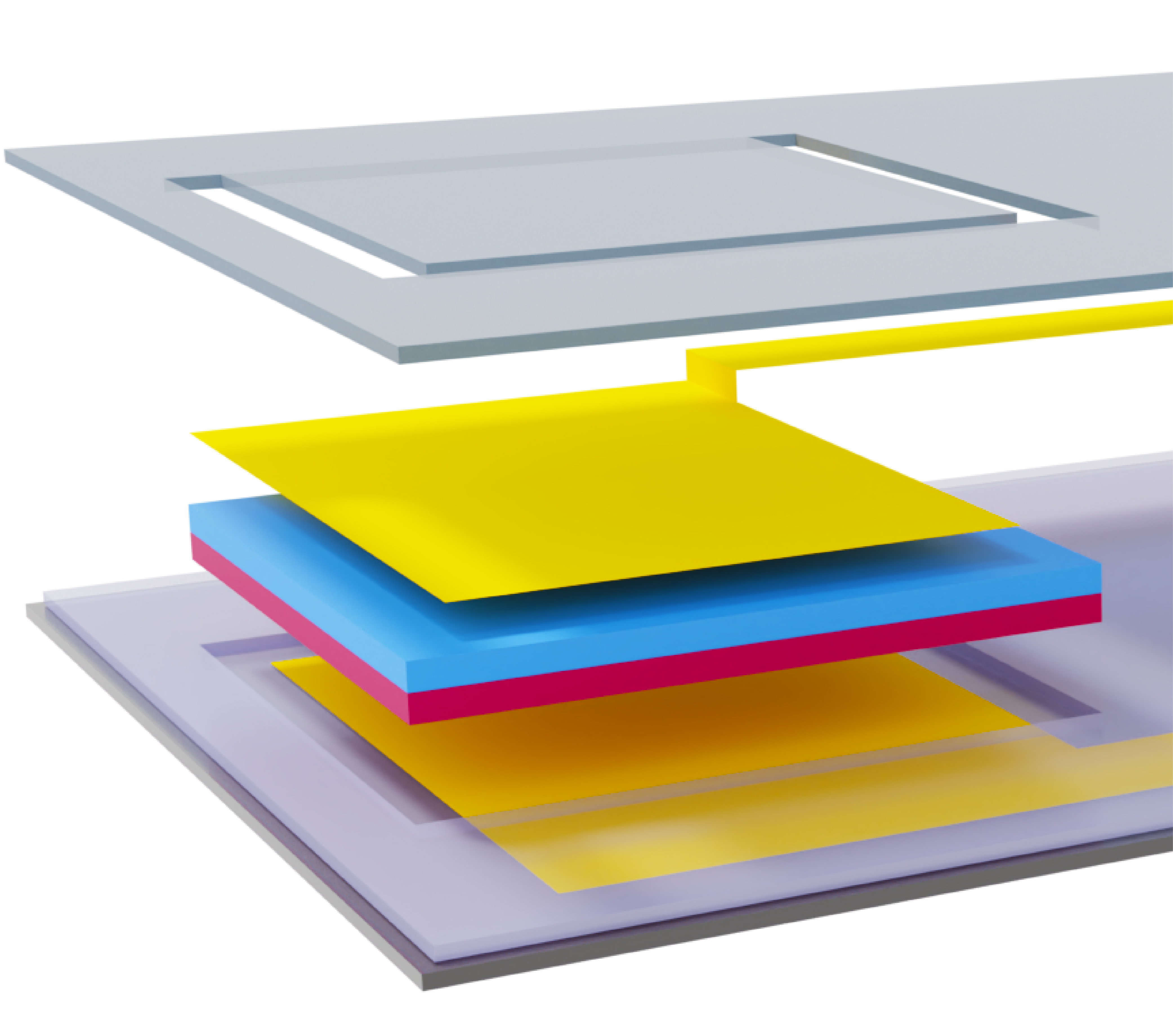The Problem
Scaling up wearable health technology faces obstacles with power usage and efficiency.
Scaling up wearable health technology faces obstacles with power usage and efficiency.
A bilayer organic transistor with off-on-off current output that can be used to make compact and efficient artificial spiking neurons.
The method could allow the reproduction of bio-inspired signal processing, opening a path to low-power, personalized wearable/implantable healthcare systems.
Professor Jonathan Rivnay, PhD Student Zach Laswick, Postdoctoral Researcher Gianmaria Matrone
The field of wearable/implantable healthcare technology continues to expand. One key for the devices’ growth is making them usable without gobbling up too much power to be practical.
A team with Professor Jonathan Rivnay may have taken a step closer to that reality, developing a bilayer organic transistor with off-on-off current output characteristics that can be used to make compact and efficient artificial spiking neurons. They then used those artificial neurons to reproduce the processing functions of the retina.
“We believe the possibility to realize different kinds of artificial neurons opens a path to low-power, personalized, wearable/implantable healthcare systems,” Rivnay said. “Our circuits can be optimized and scaled up for smart therapies or diagnostics. We envision artificial neurons could work as a prosthesis to replace damaged biological neurons. They could also be monitored to analyze health markers and diagnose disorders before a doctor's visit.”
Rivnay is a professor of biomedical engineering and materials science and engineering at the McCormick School of Engineering. This work, “Tunable Anti-ambipolar Vertical Bilayer Organic Electrochemical Transistor Enable Neuromorphic Retinal Pathway,” was published in July in the journal Nature Communications.

In the study, Rivnay and his team developed a new approach to design transistors with polymeric materials. These transistors are small and show promise for future large-scale integration.
By combining different conducting polymers in a layer-by-layer structure, Rivnay and his colleagues could control the transistors’ characteristics.
“These specific devices are the building blocks of ‘artificial spiking circuits.’ Indeed, they can replicate the spikes of biological neurons,” first author Zach Laswick said. “Tailoring the fabrication of these transistors, we can demonstrate different spiking circuits to mimic the functions of different neurons of the nervous system.”

The researchers were especially interested in retinal neurons, whose spikes patterns represent the language through which visual information is transferred to the brain.
“We fabricated an artificial neuron circuit with our transistors and connected it with photodetectors and other transistors to replicate the functions of the retina under high- and low-light intensities,” said Giovanni Maria Matrone, a co-corresponding author on the paper.
A focus for Rivnay’s lab is organic neuromorphic engineering. Their work seeks to emulate brain functions with circuits based on materials that have organic origins. Their approach to build the polymeric transistors allowed the design of artificial neurons with specific characteristics, replicating the functions of different biological neurons.
“This work could help us realize future systems, such as a prosthesis, that can emulate both a simple reflex response or a more complex smooth movement arc.” Rivnay said, “This class of materials will allow us to combine sensing and processing/computing functions within a single device or simple circuit, making our electronics more like our body.”